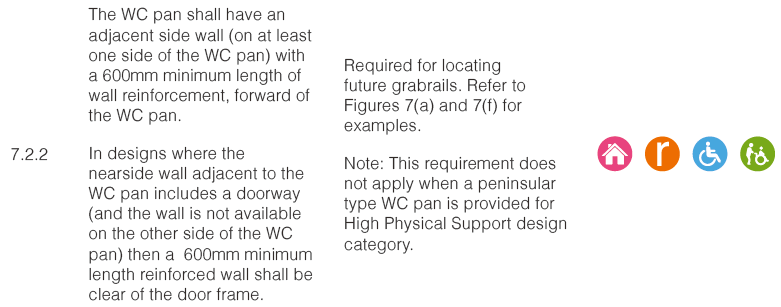Introduction
National Disability Insurance Scheme (NDIS)
The NDIS funds a range of supports and services to people who have permanent and significant disability.
Funding is provided directly to individuals on a reasonable and necessary basis. In order to be considered reasonable and necessary, a support or service:
● Must be related to a participant’s disability
● Must not include day-to-day living costs not related to the disability support needs, such as groceries
● Shall represent value for money
● Must be likely to be effective and work for the participant, and
● Shall take into account support given to the participant by formal support services and a participant’s family, carers, informal network and the community.
Specialist Disability Accommodation (SDA)
SDA is one of the supports that may be funded under the NDIS for some participants who have an extreme functional impairment or very high support needs.
SDA refers to accommodation for people who require specialist housing solutions, including to assist with the delivery of supports that cater to their extreme functional impairment or very high support needs. SDA does not refer to the support services, but the homes in which these are delivered. SDA may, for example, have specialist designs for people with very high needs or a location or features that make it feasible to provide complex or costly supports for independent living.
At the centre of the NDIS is the need to maximise the choice and control of the participant, and to promote opportunities for social and economic participation. Accordingly SDA should enhance self-determination and create the conditions required for participants to lead vibrant, safe and independent lives.
The Design Standards herein have been crafted with the intention of improving the lives of participants by assisting them to live in their own home that meets their individual needs and is situated in communities that facilitate social connections and a sense of belonging. The Design Standards focus is on providing a home environment that maximises the capacity of the individual to live as independently as possible incorporating personal support features within contemporary housing practice. Design to reflect an individual’s personality and interests is further encouraged. The diversity of accommodation provided should reflect the diversity of choice available to all members of the community.
SDA should be located on suitable parcels of land that support accessible dwelling and outdoor areas. The site should be in close proximity to public transport and amenity. The NDIS enables participants to choose from a variety of offerings as the SDA market matures, however location and access to amenity will be valued above all as it is in all real estate sectors.
About this SDA Design Standard document
This document sets out the detailed Design requirements that shall be incorporated into new built Specialist Disability Accommodation under the National Disability Insurance Scheme. This SDA Design Standard document is based on the four categories of SDA design which are set out in the SDA Rules, namely:
● Improved Liveability
● Robust
● Fully Accessible
● High Physical Support
From 1st July, 2021, all dwelling enrolment applications for Specialist Disability Accommodation (SDA) will be required to include a certificate from an Accredited SDA Assessor nominating the Design Category the dwelling to be enrolled satisfies based on the Design Standards established in this document.
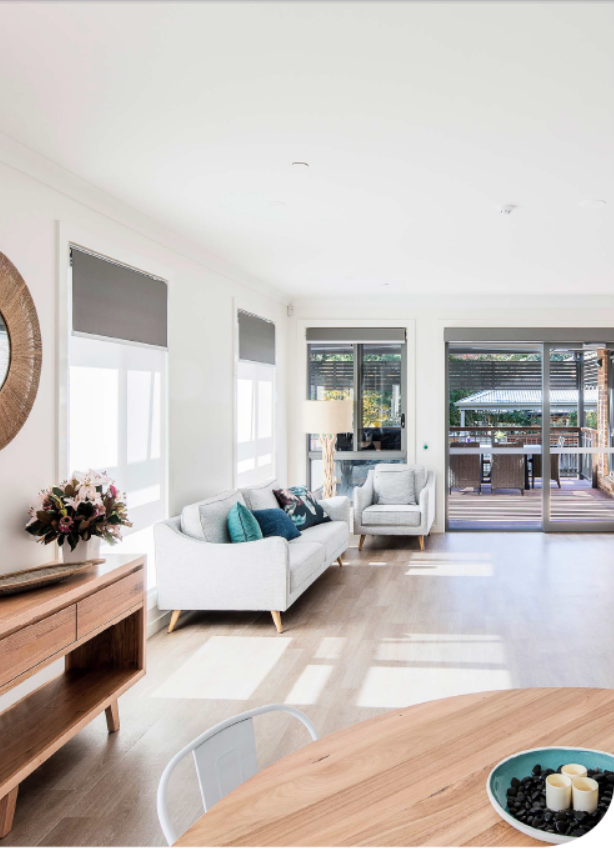
When can the dwelling be certified?
A dwelling can be certified to a particular Design Category at two stages:
1. Provisional – Design Certification of SDA dwelling
The dwelling design can be certified as compliant with the design requirements of a particular design category when the design has been submitted for building approval to a regulatory authority such as a council or a certifier.
The certification is called ‘Provisional’ as the dwelling has not been built at this stage. Only a built dwelling can get a Final certification suitable for NDIS enrolment.
2. Final-as-built Certification of SDA dwelling (Mandatory for SDA enrolment)
The dwelling shall be certified as a particular Design Category when the dwelling is built with the relevant features as listed in the Design requirements section of this SDA Design Standard document.
The advantage of the 2-step certification is to give assurance to Builders and Developers that if the dwelling is constructed based on the certified design then the dwelling will be approved for use as a compliant SDA dwelling by the NDIS.
Note that density requirements and building type are to be as required by the NDIS and do not form a part of this SDA Design Standard document.
Dwellings can be certified as compliant by an Accredited SDA Assessor, when compliance with all the provisions of the Clauses applicable to that particular design category as stated in this SDA Design Standard document are met.
What are the minimum features required?
This SDA Design Standard document sets out the minimum design requirements for each Design Category.
Dwellings of all Design Categories must, as a minimum, contain no less than one of each of the following elements:
● A Kitchen,
● A Bathroom,
● A Living/Dining area,
● An Entrance/Exit; and
● At least one Bedroom per participant.
Note: A bedsit or studio style design (example a motel room, all in one) is not permitted.
Note: In some cases provision of a shared laundry with multiple residents is considered to be reasonable.
Can a design be certified under multiple design categories?
A single dwelling may be certified under multiple design categories however all shared areas must comply with the minimum requirements of all enrolled Design Categories
What is the relationship between the NDIS SDA Design Standard and the National Construction Code (NCC)?
The National Construction Code (NCC) sets out the minimum construction requirements for all new building work in Australia. The dwelling is required to comply with all applicable requirements of the NCC, including but not limited to waterproofing and termite protection measures. Apart from the spatial requirements as noted in this NDIS SDA Design Standard, where there is a conflict between the NCC and the NDIS SDA Design Standard, the NCC takes precedence.
Can the Design Requirements be varied to suit a particular participant?
At the design stage the individual participant’s requirements may be unknown and therefore each design requirement will need to be satisfied to the category(s) selected.
The SDA Design Standard requirements have been determined as a minimum to be reasonable and necessary for the SDA participants based on their needs.
How to read this SDA Design Standard document
Words with specific meanings are defined in definitions / glossary section of this SDA Design Standard document.
The table has:
• A Clause number for reference
• Design Requirements – which is a minimum requirement for Deemed-to-Satisfy with the SDA Design Standard document.
• The Rationale column which details the reasoning behind the requirement and also provides some further clarifications.
• The Design Category that the Design requirement relates to.
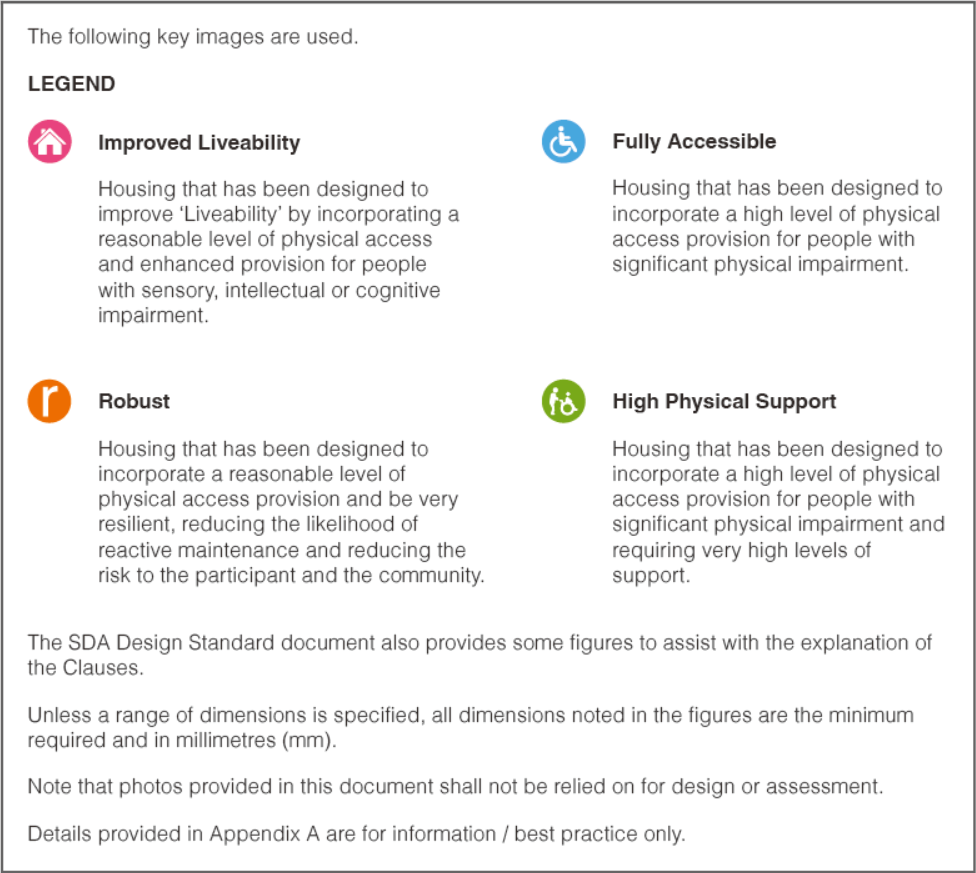
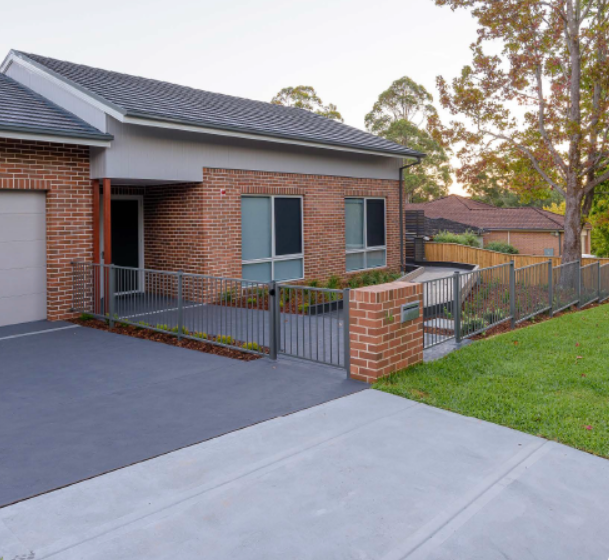
Specialist Disability Accommodation Design Standard
1. General requirements

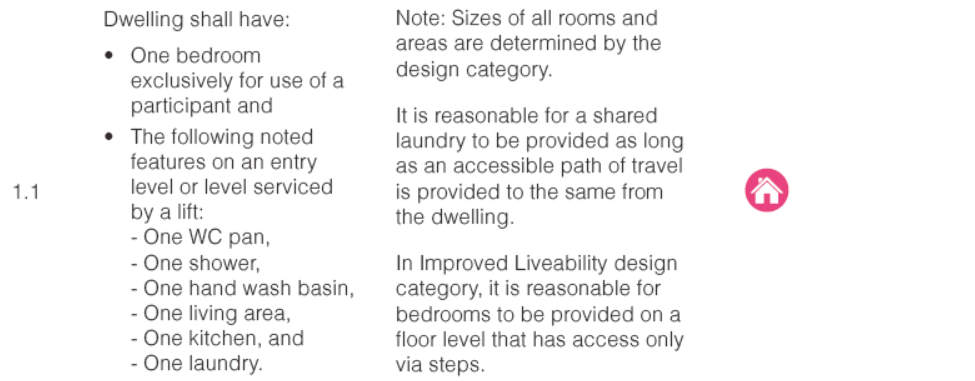
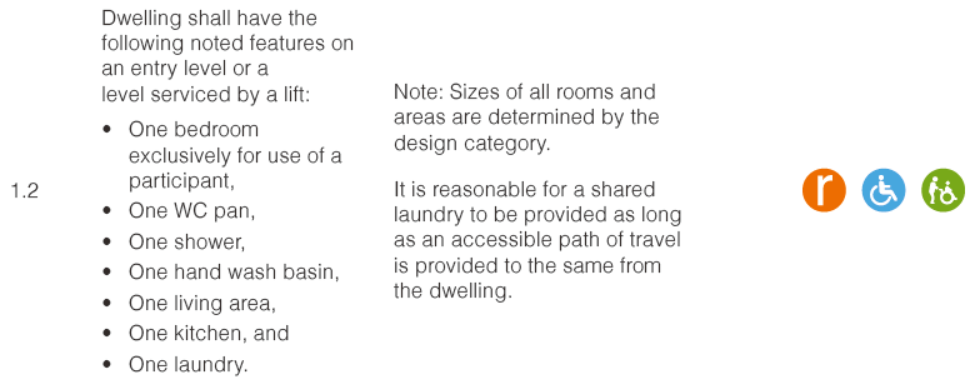

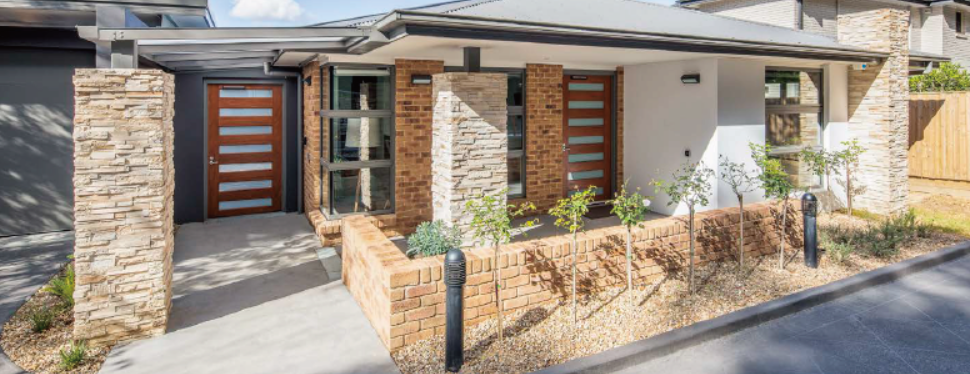
2. Pedestrian entry from the site boundary

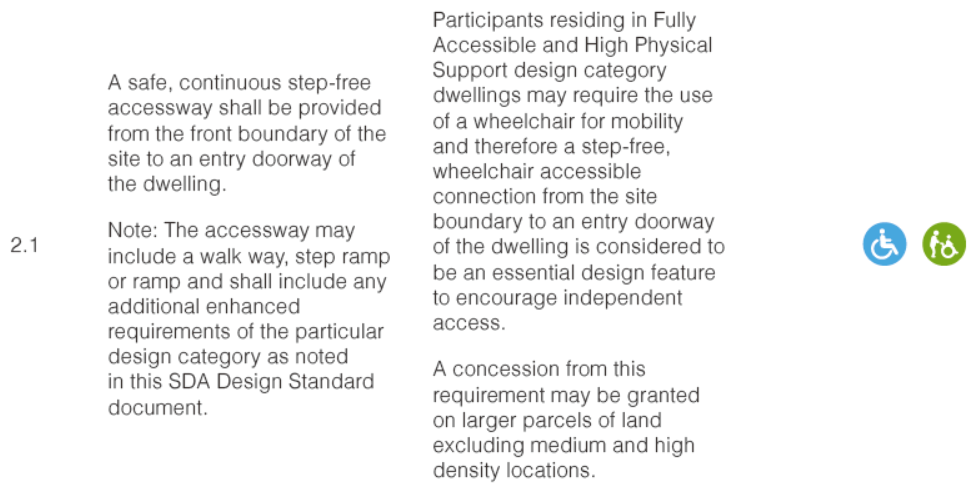
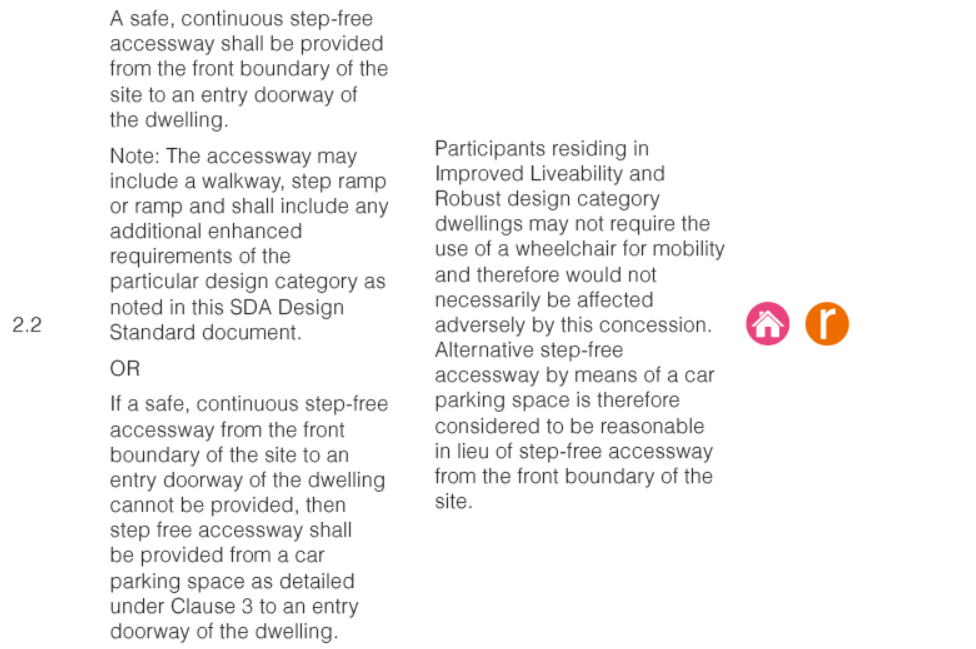
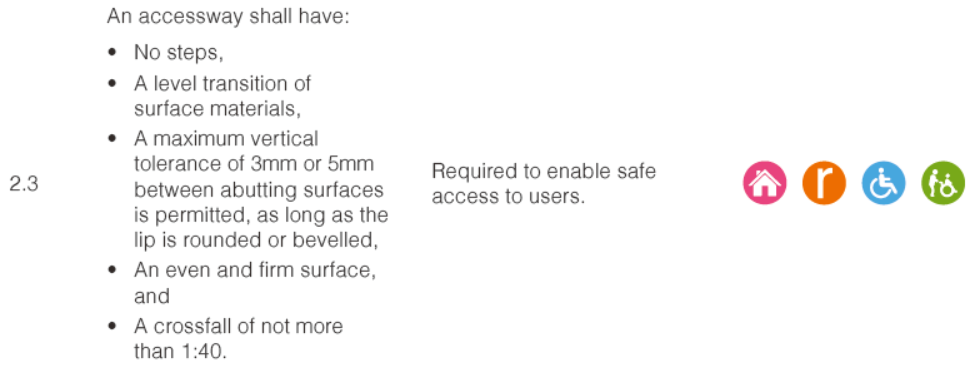
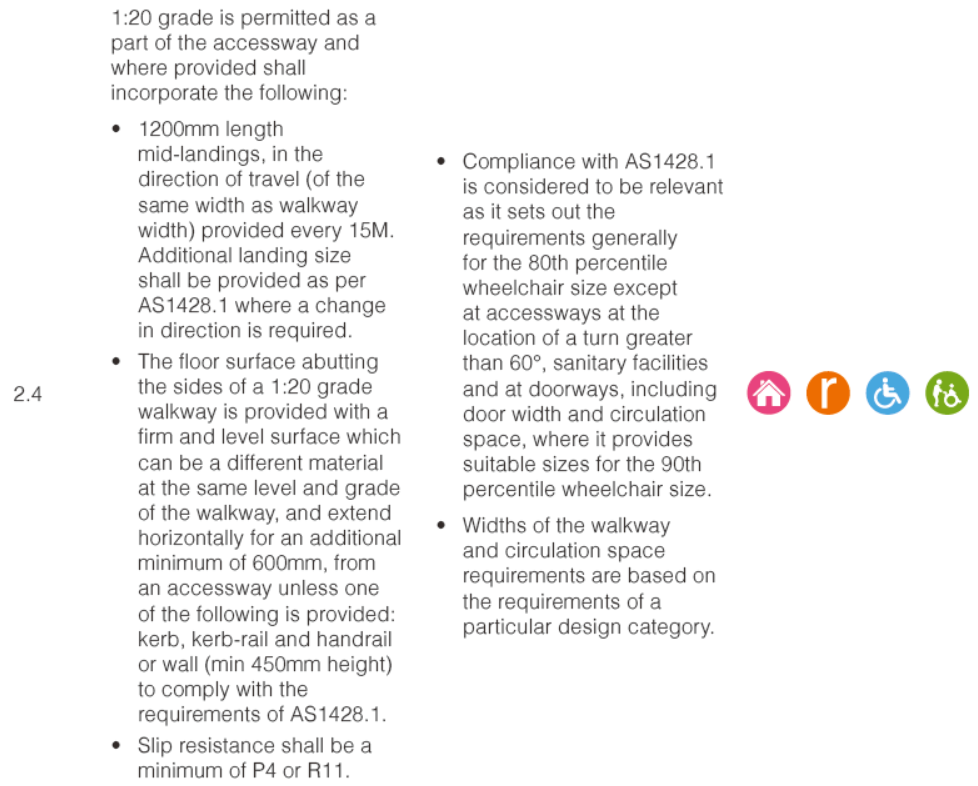

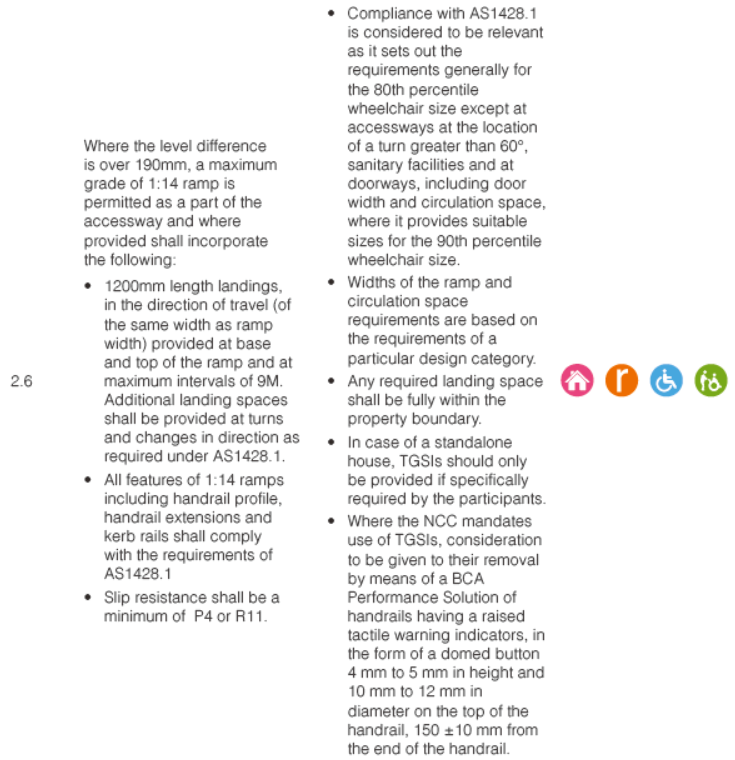







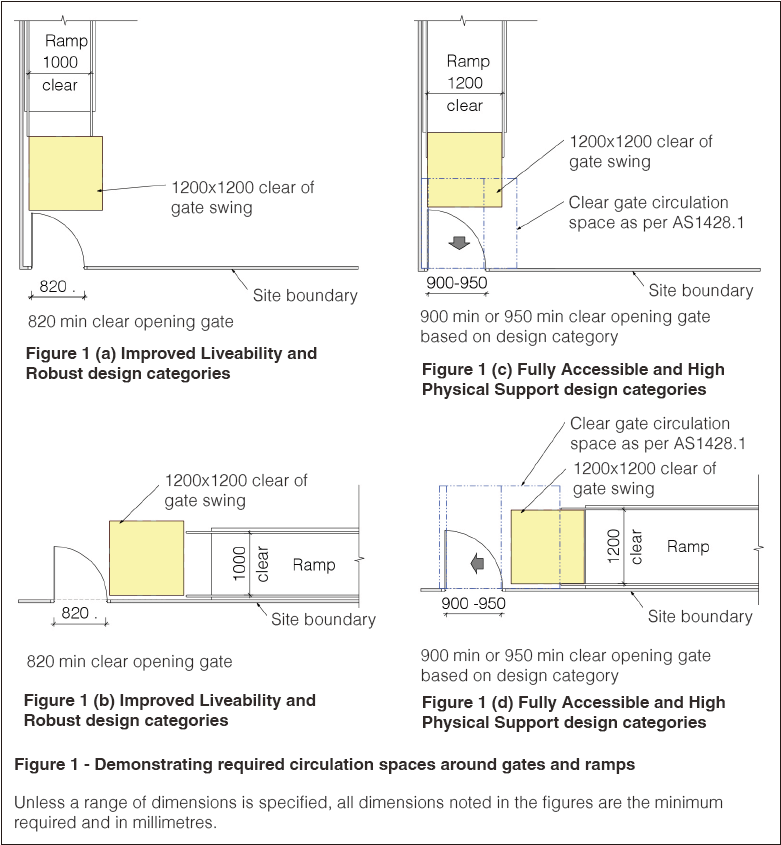
3. Car parking

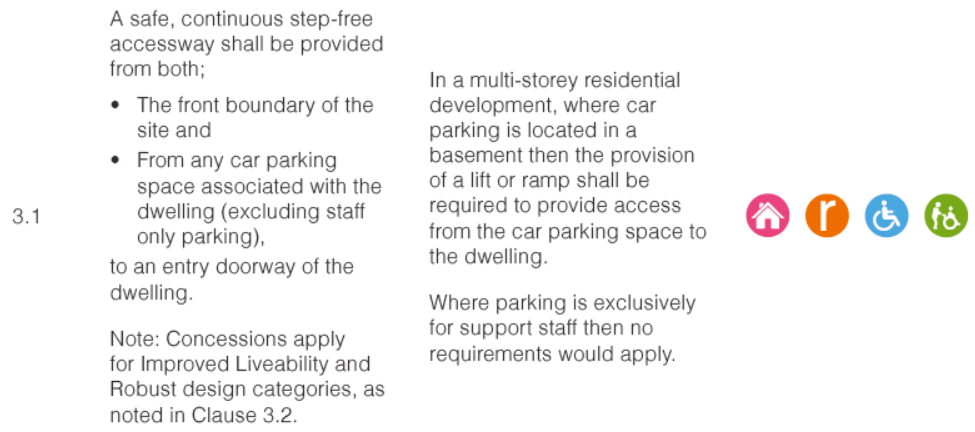
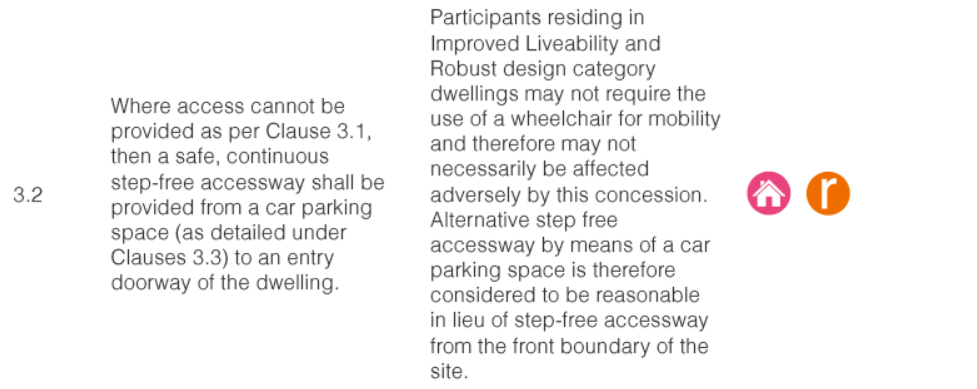
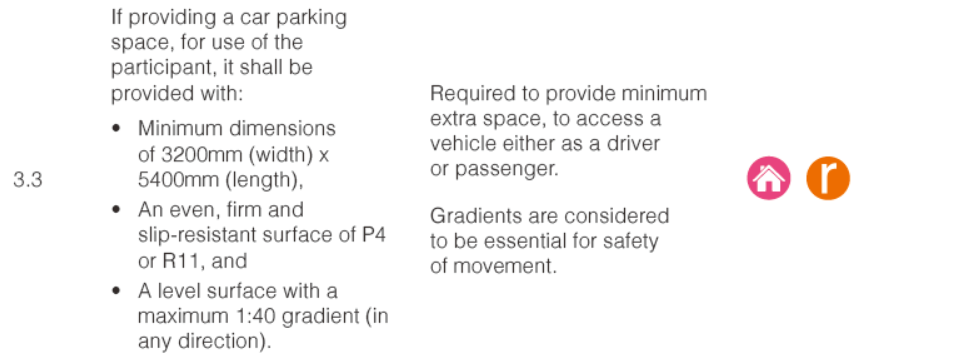
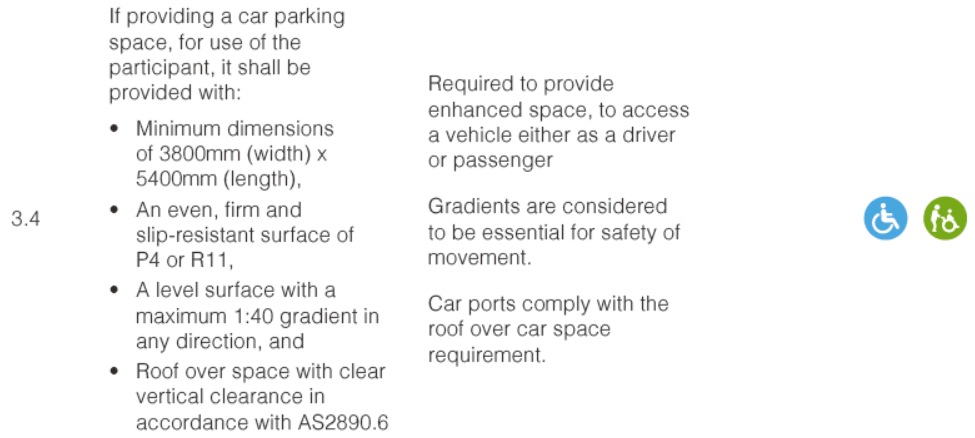


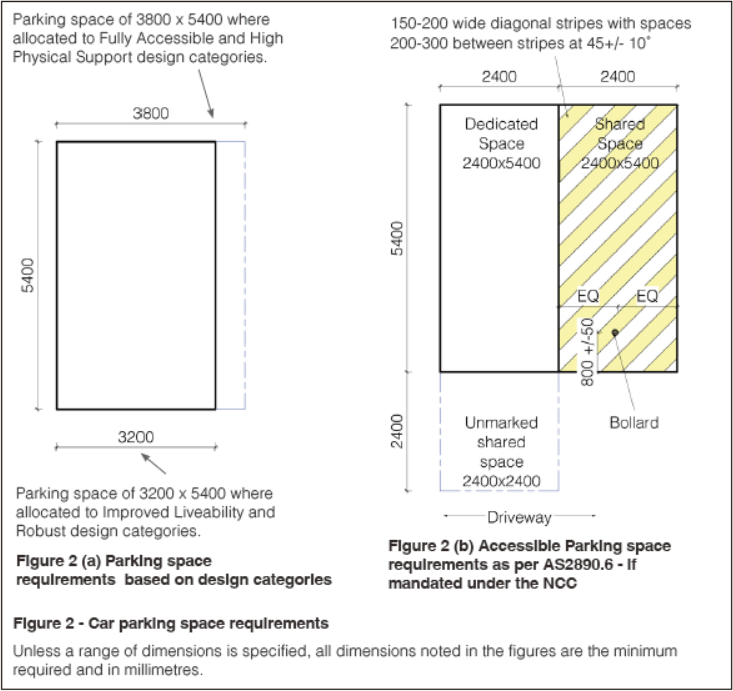
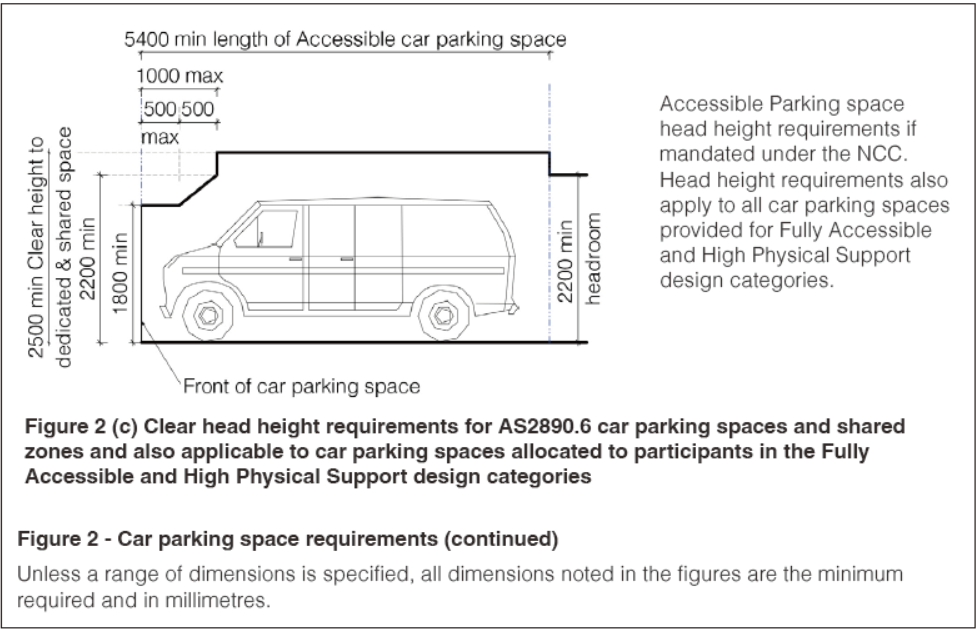
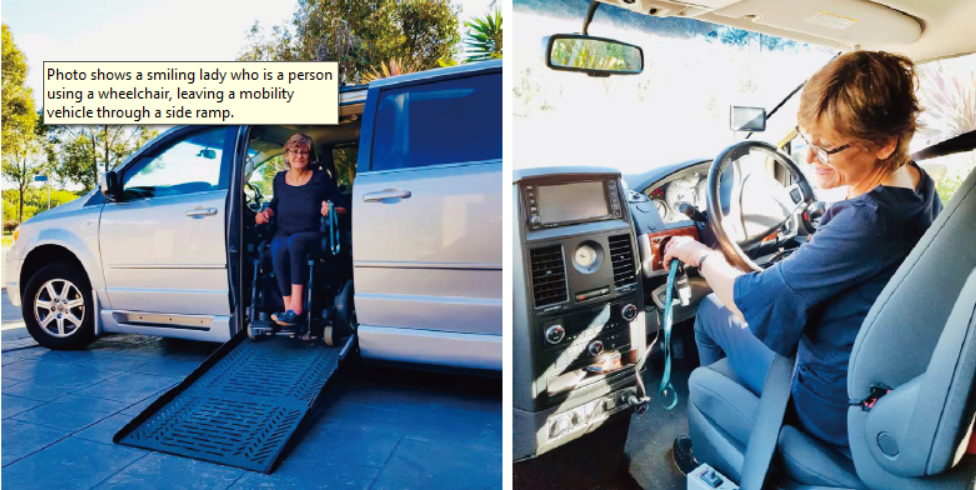
4. Entrance, doorways and door hardware
4.1 Requirements for dwelling entrance and other external doorways


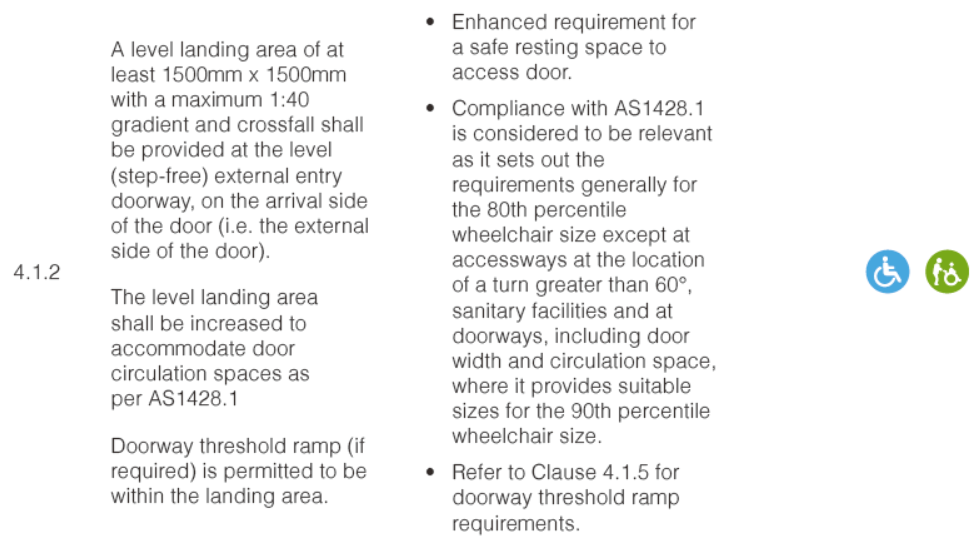



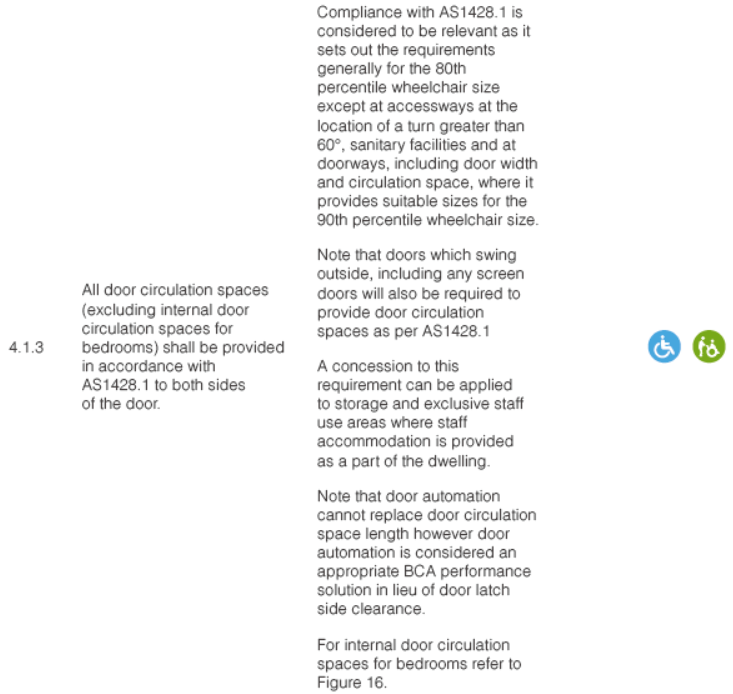




4.2 Requirements for doorways and door handles









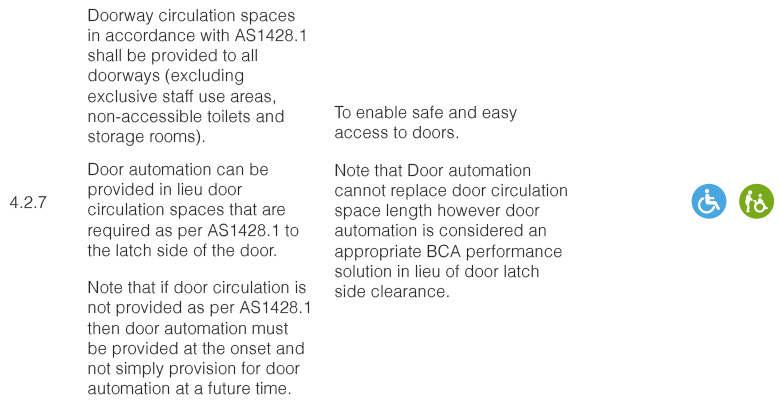




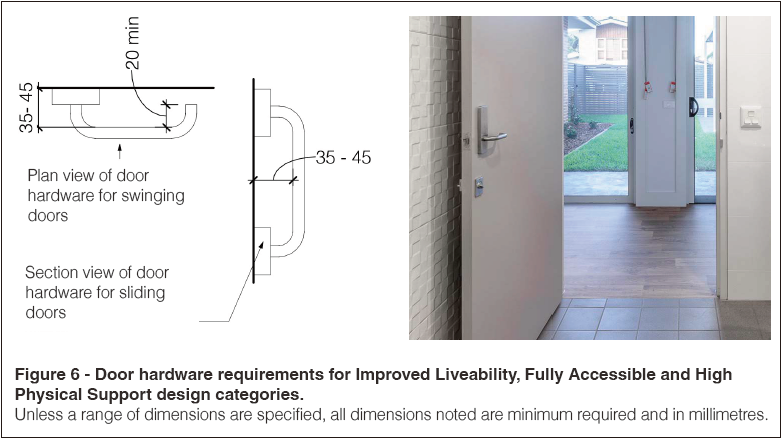
5. Corridors



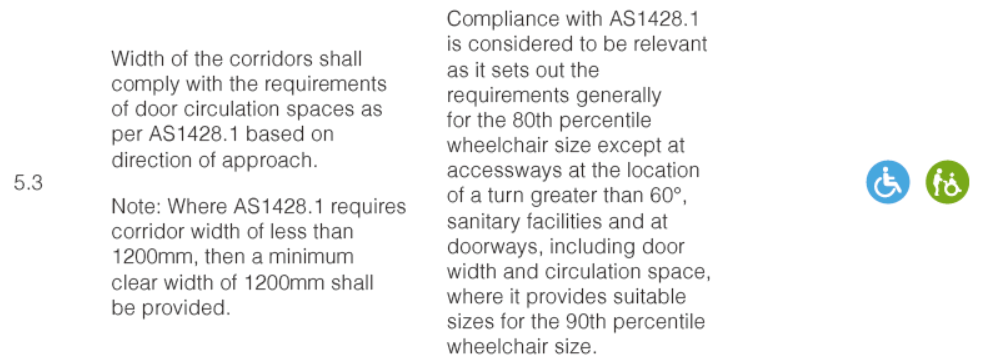

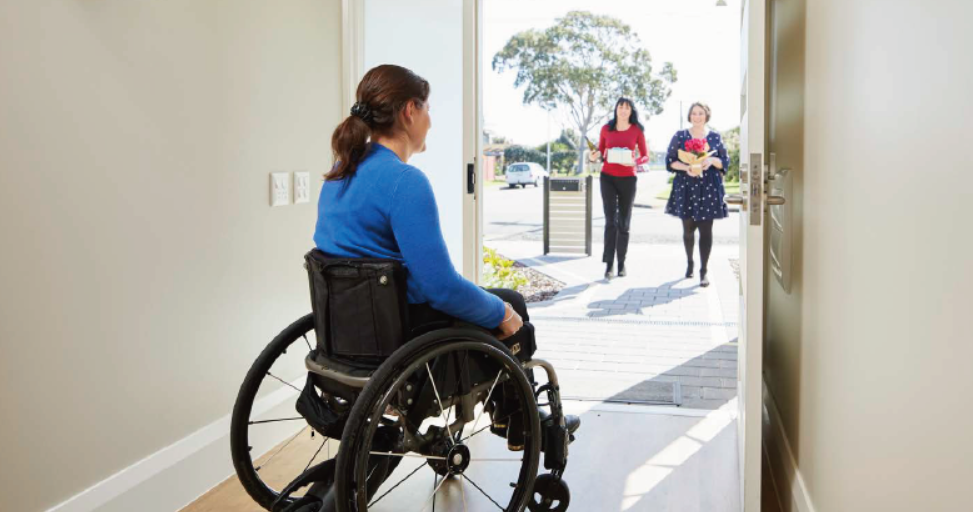
6. Windows








7. Sanitary facilities
7.1 Internal layout requirements







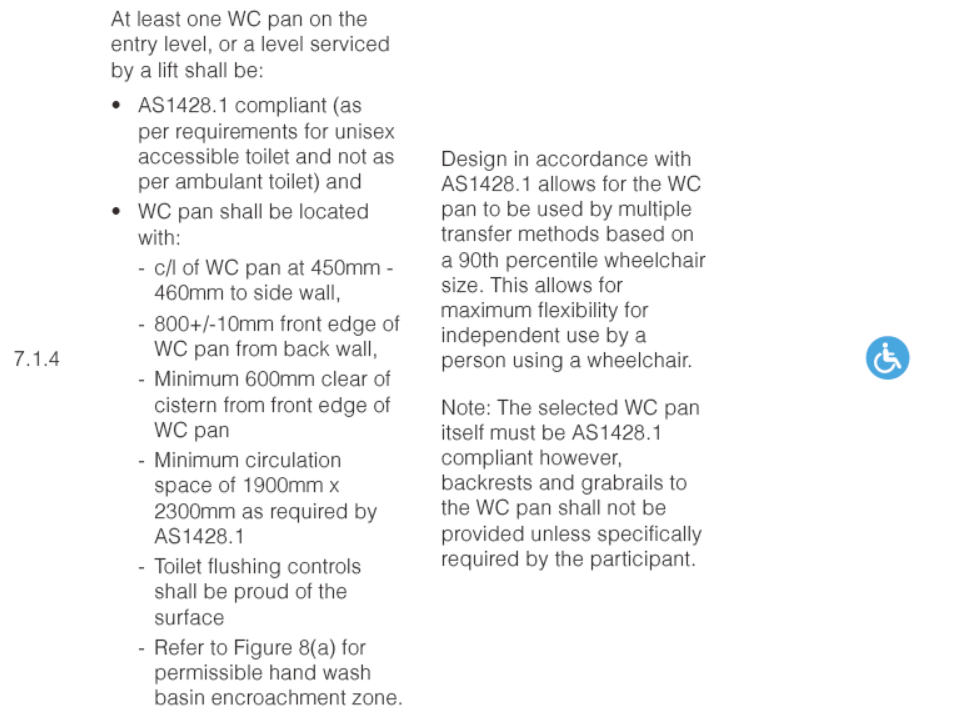
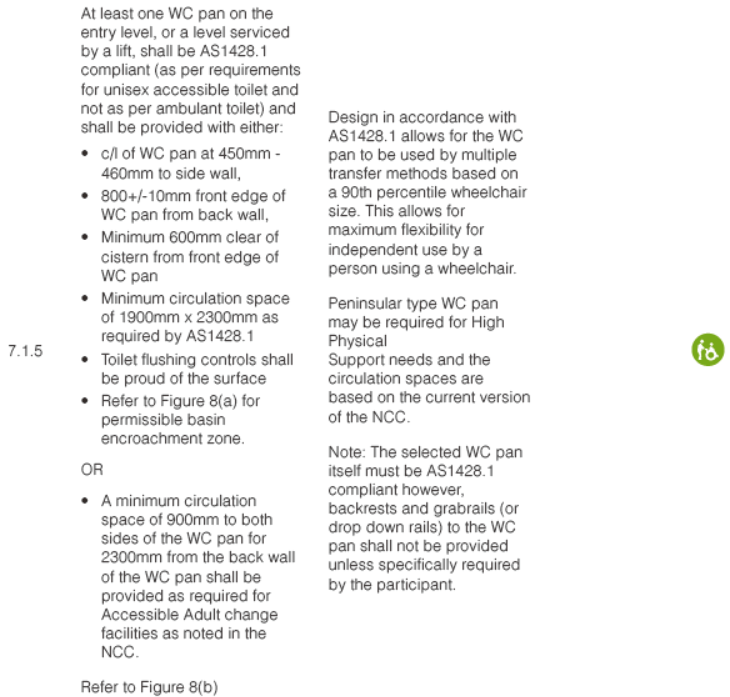

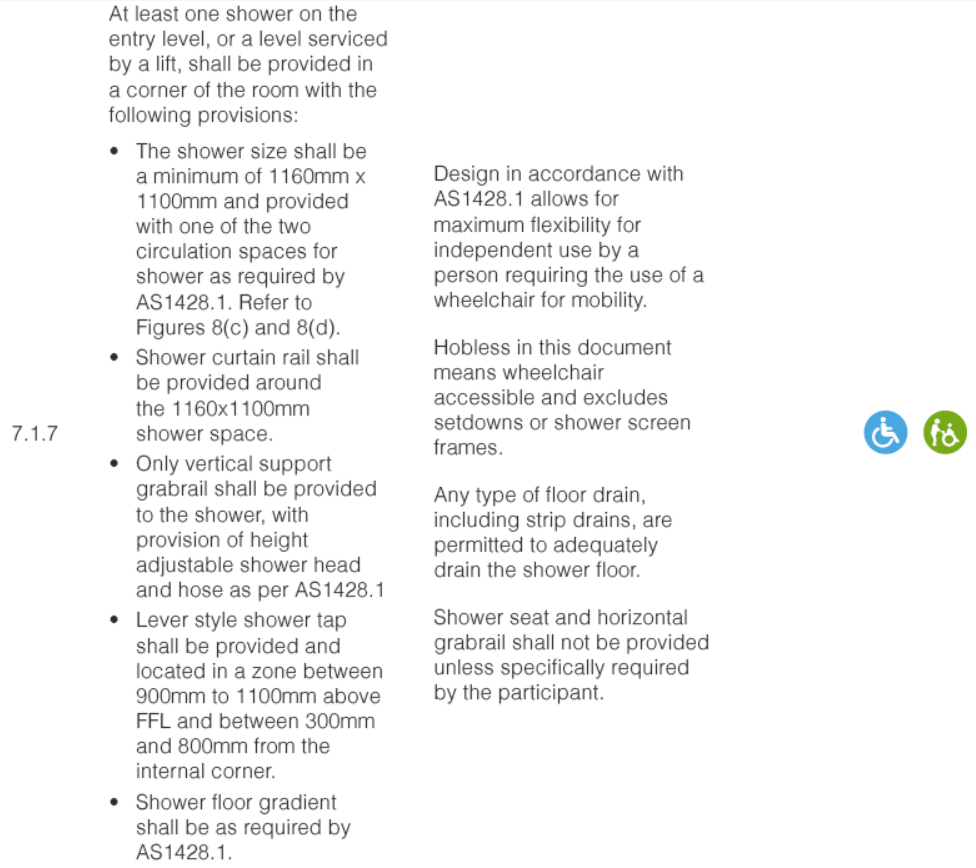
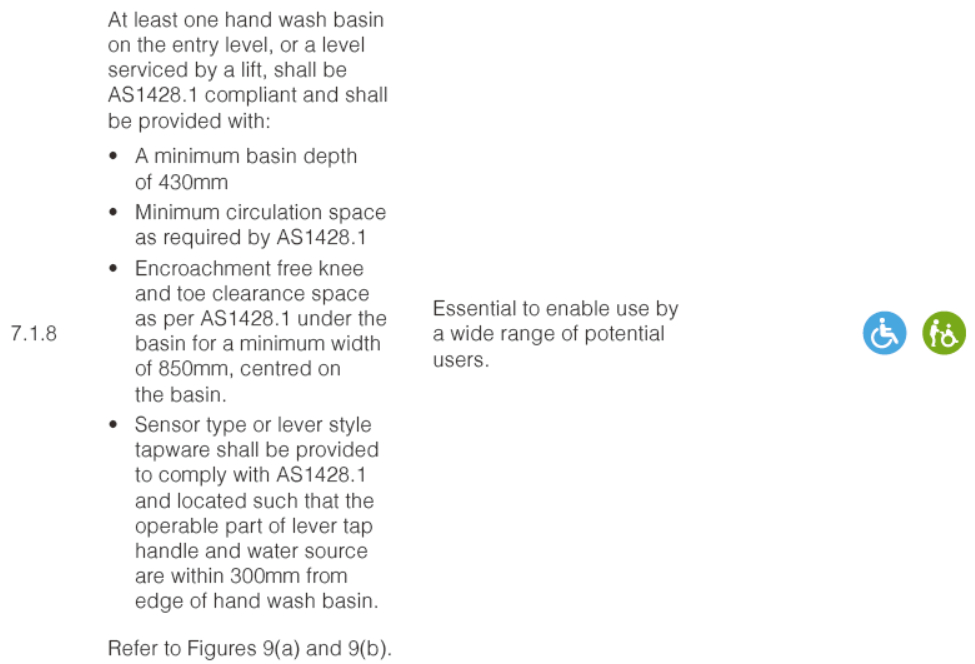












7.2 Wall reinforcements to sanitary compartments


